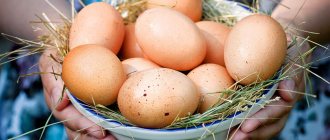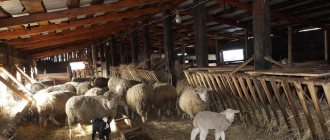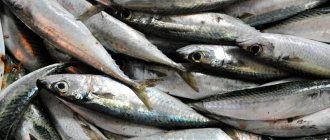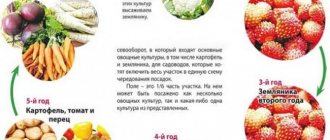Feeding rules
When feeding an animal with this vegetable, it is necessary to avoid an overdose, which can negatively affect the condition of the animal’s gastrointestinal tract, cause allergies and hair loss.
At what age can rabbits be given carrot tops and root vegetables?
It is recommended to start giving this product, both fresh and fermented, as well as carrot tops to pets from the age of two months. Moreover, if the animal avoids such food, the product should be replaced with some other juicy food.
At the beginning of feeding the pet with carrot tops or root vegetables, the owner needs to carefully monitor the general condition of the animal, since in some cases the rodent is allergic.
How and in what quantity should rabbits be given carrots and carrot tops?
It is advisable to give the orange root vegetable to the animal in crushed form. Before this, the product must be thoroughly washed under running water, avoiding the use of any chemical detergents for washing vegetables. If the skin of the vegetable is a bit tough, it is recommended to peel it off.
The tops also need to be washed and cut into small pieces. It is advisable to carefully remove dried or withered areas by cutting them off with a sharp knife.
The optimal amount of root vegetables depending on the age of the animal:
- for adult rabbits - 200 grams per day;
- for rabbits from 2 to 4 months - 100 grams per day.
Allowed daily amount of tops:
- for adult pets - 50 grams;
- for rabbits from 2 to 4 months - 30 grams.
It is necessary to gradually add the amount of this vegetable as the animal grows, making sure to include grass, herbs and other vegetables in the diet.
At what age can cucumber supplements be added?
Fresh cucumbers can be added to the diet of decorative rabbits immediately after switching to plant foods. The change in diet should occur gradually. Productive breeds can add cucumber mixture to their food only after the fattening period has ended.
For the first time, fresh cucumbers can be given to pets only after 4 months of life. By this period, their body becomes more stable and is able to digest heavier foods. This rule applies to both decorative and production breeds.
Beneficial properties of vegetables and tops in the diet of rabbits
For the first 2-3 weeks, baby rabbits are fed mother's or goat's milk, or cow's milk. Then they gradually begin to give mixed feed, boiled potatoes, grated carrots and dried young grass. Juicy fresh grass can cause diarrhea.
By 7-8 months you can offer the following vegetables:
- raw (50 g) and boiled (75 g) potatoes;
- beets (70-75 g);
- cabbage leaves, but not white cabbage (250 g);
- apples (seasonal).
At the age of three months, rabbits are transferred to an adult diet that includes the following vegetables:
- cabbage of all types (except white cabbage);
- zucchini;
- squash;
- carrot;
- pumpkin pulp;
- green peas;
- corn cobs;
- artichokes;
- radish;
- tomatoes;
- cucumbers
Animals can be given beet tops, but only leaves that have been cleaned of dirt and slightly dried.
It is better to feed vegetables grown in the garden: store-bought tomatoes contain nitrates, which are added to obtain a quick harvest. Greenhouse tomatoes are especially harmful. Tomatoes should be given for breakfast in the amount of 300 g.
The plant consists of water, carbohydrates, and contains many microelements and vitamins. Before introducing cucumbers into the diet, you need to check how rabbits tolerate them.
Be sure to read:
What do decorative rabbits eat, what can you feed at home?
To do this, they are given chopped on a grater with other ingredients, mixed with chopped herbs. Animals should be fed only fresh cucumbers.
Carrots are a rabbit’s favorite root vegetable and will not harm his body. It contains carotene, which increases appetite and improves metabolism.
The rabbit will also receive nutrients from beets.
There are three types of root vegetables:
- Red beetroot. It is rich in vitamins, minerals, and contains the necessary amount of carbohydrates and sugars.
- Fodder beet. It is useful because it helps produce energy during metabolism.
- Red (table) beets. Contains a lot of oxalic acid, which has a laxative property and interferes with the absorption of calcium. The given root vegetable is not suitable for rabbits.
The tops of these vegetables are easier for rabbits to digest and have a lot of fiber.
The choice of greens must be approached carefully so as not to harm animals
Which vegetable leaves and tops are not allowed for rabbits:
- cucumbers;
- bell pepper;
- dill and parsley (due to the content of essential oils);
- radishes (can cause intestinal problems in animals);
Potatoes and tomatoes top the list of forbidden plants because their leaves contain the alkaloid solanine, which is a toxic substance that can cause food poisoning or intestinal upset.
Tops and leaves of which plants can be:
- beets;
- peas and corn;
- celery;
- rhubarb;
- garlic stalks;
- spinach, various types of lettuce leaves;
- dry nettle;
- carrots;
- Chinese cabbage.
Be sure to read:
Is it possible to feed rabbits with watermelon rinds, especially decorative ones? Do they even eat the rinds?
You can introduce a little raw potatoes into the diet - about 20% of the main food, but no more: starch in its raw form is poorly absorbed by rabbits. They produce selected tubers without damage, without sprouts and eyes. Peeling after washing is mandatory.
Boiled potatoes have no contraindications, are better absorbed by animals, and are suitable for both young and adult rabbits.
Potatoes are given to female rabbits carefully during the feeding period, since starch can clog the ducts through which milk rises to the nipples. You can add potatoes to your baby rabbit’s food 2 times a week in the fifth month after birth.
What vegetables and fruits are given to rabbits?
Vegetables
Despite the fact that vegetables are not considered the basis of a rabbit's diet, they still need to be placed in the rabbit's feeder. This will diversify their food and ensure the supply of additional valuable substances (vitamins and minerals). Also, rabbits must constantly chew something, as Mother Nature intended, and chewing hay all their lives is somehow not particularly joyful.
So, furry lovers are invited to familiarize themselves with the approximate list of vegetables allowed for rabbits:
- carrot;
- turnip;
- zucchini;
- pumpkin;
- squash;
- cucumber;
- green peas);
- tomato;
- corn;
- radish;
- parsnip;
- Bell pepper;
- beet;
- Jerusalem artichoke.
I would like to pay special attention to cabbage. This vegetable can be given (cauliflower, broccoli), but in small portions, and it is recommended to avoid white cabbage
Yes, pumpkin, zucchini, beets and squash are included in the list of permitted foods, but keep in mind that this is the same laxative for animals as it is for people. Therefore, there is no need to pour them in large piles into cages. After eating corn, rabbits gain weight well. So rabbit breeders pursuing only this goal can often feed their animals corn. In principle, they crush corn shoots, stalks, and husks from the cobs by both cheeks.
What vegetables can be given to rabbits without fear are cucumbers and Jerusalem artichoke. It is recommended to give cucumbers even to females during lactation.
In addition to root vegetables, rabbits are fed vegetable tops: beets, Chinese cabbage, radishes, carrots, celery, as well as various types of lettuce leaves, spinach. They are easier to digest and are not inferior to the “roots” in nutritional value.
Fruits fed to rabbits
Fruits or berries are great as treats for eared ears.
But here you should also be careful and be sure what fruits you can give to rabbits
You can feed your pets the following berries and fruits:
Some owners feed their rabbits watermelon and melon - of course, there is no ban on them, it all depends on the animal’s reaction. Therefore, for the first time you should only give a small piece of watermelon or melon pulp.
If you choose the right types of fruits and berries for your pet, they will help improve immunity and appetite in rabbits, and will also perfectly cleanse their intestines of hair and other debris.
The recommendations given apply to both feeding decorative rabbits and those raised for meat, skins, etc.
How to feed rabbits with cucumber tops?
Cucumber tops can also be given to rabbits, but subject to the following recommendations:
- It is forbidden to feed wet tops to animals, especially if they are soaked in morning dew. Dew and water will cause intestinal problems in the animal.
- Before serving, the tops are checked for rot, traces of pests and other damage. All damaged areas are removed and the animals are given the tops in crushed form - it is necessary to divide the leaves into 2 parts; adults and large individuals can handle the tops on their own.
- The tops can be prepared for the winter and given to rabbits in crushed form along with grain. To dry, the tops are checked for damage, all such places are removed, and the harvest is dried in the sun in summer or autumn, during the period when the garden is cleared of greenery.
- When preparing cucumber tops, carefully inspect them for the presence of pests, especially slugs. If parasites get into the animal's stomach, you may encounter serious problems in the functioning of the digestive system.
When can it be given to young animals?
As for young animals, cucumbers can be fed only after 4 months of life. By this time, their body will be strong enough to easily digest such dishes. Do the same with decorative rabbits. They need special care, start giving very carefully.
Before feeding small rabbits, you need to approach it with all responsibility. They are just developing and may not digest many foods. Pay special attention during the period when they are weaned from the rabbit's milk and begin to feed on their own.
Decorative rabbits living at home receive the greatest benefit from cucumbers. It is also suitable for pedigree breeds that do not want to gain extra pounds and must have a balanced diet.
Cucumber tops
It can be given to ordinary and decorative rabbits. But you need to follow some cooking recommendations.
You should not feed wet tops to animals; they should dry out in the sun for some time. Water and dew on the tops can cause digestive problems.
Before feeding, it also needs to be checked for rot, mold and other damage. Remove affected areas and then serve to rabbits in crushed form. The leaves are divided into 2 parts; adults and large animals will eat the tops on their own.
Attention. Various insects found on plants, such as aphids and slugs, can also pose a danger to pets. If they get into the stomach, this can lead to serious problems with the animal’s digestive system.
They also feed with tops in winter. To do this, you need to prepare it correctly:
- clean from dirt and other affected leaves;
- place in the sun along the entire length of the stems;
- turn over several times a day so that the tops dry evenly;
Store in a dark, ventilated place. It can be given along with hay and straw.
Is it possible to give rabbits fresh cucumbers and their tops?
Experts are confident that cucumbers do not harm the health of rabbits. However, you should not immediately switch the animal to a diet consisting exclusively of this vegetable. It should be a supplement to the daily diet
Herbivores are especially susceptible to various digestive diseases, so it is important to approach their diet with caution - not every food will be beneficial
Important! Cucumbers purchased in stores are not suitable for feeding rabbits. They may contain chemical elements that promote long-term storage. They are also often sprayed against pests.
Excess of harmful substances and toxins can cause allergies
They are also often sprayed against pests. Excess of harmful substances and toxins can cause allergies.
Cucumber contains water, carbohydrates, beneficial macro- and microelements, as well as vitamins (water-soluble and fat-soluble). It is also low-calorie: 100 grams of vegetable contains only 14 kcal.
Rabbit eats cucumber
Since cucumbers contain little fiber, they cannot be considered an essential food. In addition, they are not suitable for feeding herbivores. In the case of commercial species of rabbits, it is rational to replace the vegetable with water. Decorative species living at home get the most benefit from this product.
Cucumber supplements are also suitable for breeding breeds, for which it is important to have a balanced diet. They do not allow you to gain excess weight, while they are rich in vitamins and microelements. However, if you overuse the cucumber mixture, gastrointestinal upset and food poisoning may occur.
However, if you overuse the cucumber mixture, you may experience gastrointestinal upset and food poisoning.
Attention! Cucumber tops are not suitable for feeding. These plants are not nutritious food. In addition, animals do not like the presence of small thorns on the leaves and stems
Plants are often sprayed with chemicals and growth stimulants. Toxins that come into contact with plants can poison pets. The nature of the poisoning will depend on the type of poison with which the plant was treated
In addition, animals do not like the presence of small thorns on the leaves and stems. Plants are often sprayed with chemicals and growth stimulants. Toxins that come into contact with plants can poison pets. The nature of the poisoning will depend on the type of poison with which the plant was treated.
Pros and cons of a vegetable diet
Not all succulent types of food are equally beneficial for rabbits. Many farmers believe that giving cucumbers as food to this type of herbivore is prohibited; others, on the contrary, talk about the benefits of the green root vegetable. Negative statements are due to the fact that animals that eat cucumbers often begin to behave sluggishly and may react with loose stools. But this phenomenon is most often observed when farmers do not comply with the qualitative and quantitative characteristics of the fed product. You also need to be attentive to the nutrition that is given to small rabbits. They should not be fed cucumbers until they reach four months of age, since the fragile body is not able to digest such food. Animals love a variety of foods that should be rich in nutrients, but this is difficult to achieve without including vegetables in the diet.
- full development of the body;
- stabilization of the functioning of internal organs;
- intensifying growth;
- normalization of the condition of skin tissues;
- improvement of the fur undercoat.
Description of Viburnum Roseum: planting and care
In addition, they influence the quality of rabbit meat, which becomes tender, soft and acquires a special taste.
Root vegetables and fruits contribute to:
- replenishment of necessary elements;
- normalization of metabolism;
- increasing immunity.
Rabbits have a sensitive stomach and intestines that cannot digest all plant foods. Therefore, their selection should be approached with special care, and the quantity of each product and its ability to be mixed with other ingredients should be taken into account. Rabbit breeding for meat production is subject to requirements for obtaining high-quality fillets, without excess fat layers. But animals can consume large amounts of food, which does not always have a beneficial effect on their body. In this regard, monitoring their nutrition should be carried out regularly. So that rabbits can grind down their teeth, they are given twigs of currants, cherries, acacias and some other shrubs and trees to chew on.
There is a list of succulent foods that can be given to rabbits
Succulent foods include fruits, some vegetables, and plant tops. Let's try to figure out which type of food is more suitable for pets and which is better not to give.
Vegetable tops
Is it possible to give carrot tops to rabbits? Definitely, this is a very good food for animals. The tops are in no way inferior to the roots, but are easier to pickle and have more fiber. It is also rich in carotene, vitamins and other nutrients that animals need. Young animals also eat carrot tops with pleasure; they are as necessary for them as the roots, as they are a source of many vitamins.
Do rabbits eat carrots? Here the answer is also clear: they eat it with pleasure at any age, but the vegetable should not become the main food. Excess carotene and vitamin A can harm the animal. It is better to give him carrots no more than once a day, or even every other day.
Pea tops
What other tops are suitable for a rabbit? Are pea tops allowed for animals? Animals respond well to legumes. You need to be careful with babies so that their tummy does not swell.
They also ask whether to feed rabbits with radish tops. The answer is not so clear-cut, because some livestock breeders say that adding a little of this feed to the diet will not hurt, while others deny this. In any case, radish tops are not very useful for animals, as they may develop intestinal problems. If radish tops do get into the cage, you should not panic. In small quantities it will not harm.
Can rabbits have radishes or not? The answer is yes. You can give radishes without fear, but not those that have just been picked from the garden. The vegetable should dry out a little. For kids you can finely chop the radishes, for larger animals you can give them whole. Radishes should not be given to rabbits often.
Many people still ask, is it possible to introduce turnips into the food of rabbits? The attitude towards it should be approximately the same as the attitude towards radishes
Turnip root is a completely suitable food, but the tops should be given with caution
Tomatoes
So, we've sorted out the tops, but how will rabbits react if they are given tomatoes? These fruits also have a lot of useful properties. Its fruits are as harmful as tops, and in small quantities they are used as feed. You need to get used to eating vegetables gradually: give a sixth or a fourth of the fruit once a day until you reach half. Giving tomatoes is allowed only once a day, preferably in the morning.
Strawberry
Interesting question, can rabbits eat strawberries? Strawberries are quite suitable as a treat or fruit bait. It should be fresh, without the slightest sign of rot. It should be given to older animals that are already three months old. Strawberries are healthy because they contain a lot of vitamins, microelements, and glucose. In addition to fruits, stems are also suitable as food, but you shouldn’t pamper animals with such a delicacy too often. It is best to treat them to strawberries once or twice a week, and feed them the stems no more than every other day.
Bananas
Bananas
Are bananas included in the diet of rabbits? The pleasure of feeding such fruits is expensive, and it is possible to do this only when the animal is alone in the house. It is better to give not the pulp, but the skins as a treat. But when asked whether rabbits can have rhubarb, they answer more positively. This plant in early spring can become an invaluable source of vitamins for animals. It grows well in any garden. In the spring, when green and succulent food is scarce, rhubarb can replace many of them. Are raspberries added to rabbits' diet? Of course, they add berries and twigs. Raspberries are very useful, especially the pagons of the plant in winter.
Snot juicy
What other kind of juicy food can you give to rabbits? People often ask whether to give fresh cucumbers to rabbits or not. This vegetable is useful for animals, especially since with a good harvest this feeding is quite inexpensive, and animals eat cucumbers with great appetite. Cucumbers must be fresh, without rot or mold, so that the animals do not get sick.
Also, rabbit breeders often ask whether Jerusalem artichoke is allowed for rabbits. The vegetable is very useful not only for people, but also for animals. Jerusalem artichoke is very useful for animals in winter, when they have enough green food and vitamins. It is stored for a long time, so you can make considerable reserves.
Juicy food should not make up more than a third of the diet. Small animals are given this type of food only after three months. All succulent food must be in good condition, free from rot and fungi.
Can rabbits be given dill and parsley?
Dill and parsley are very useful not only for people, but also for animals. These types of greens contain beneficial vitamins and microelements:
- thiamine;
- carotene;
- fatty, essential oils;
- protein;
- riboflavin;
- apiol;
- vitamins A, B and C;
- salts of iron, phosphorus, potassium, magnesium, calcium, zinc, manganese, copper, sodium;
- luteolin;
- beta carotene.
A lack of these vitamins and elements can trigger the development of various diseases and lead to metabolic disorders.
Despite the rich content, veterinarians do not give a definite answer to the question of whether dill and parsley can be given to rabbits. Among the disadvantages of this type of greens is a bitter taste, which can affect the animal’s taste buds so that it begins to refuse food. However, this statement is controversial. But there is a possibility that the new product may cause disruption in the gastrointestinal tract. In general, these herbs are good for both ornamental and meat breeds of rabbits.
Important! Each animal is individual - what one pet enjoys eating may not suit another
At what age can this herb be added to the diet?
Veterinarians recommend gradually introducing dill and parsley into your rabbit’s diet after six months. By this time, the animal’s stomach will be able to digest such food
Particular attention should be paid to the nutrition of rabbits during weaning from mother's milk - this period is important for the proper formation of the gastrointestinal tract.
Rabbits love greens from the garden, parsley is no exception.
Fruits
As for fruit feeding, an individual approach is very important here, since the tastes of pets may vary. In general, almost all the fruits that people most often eat are loved by rabbits and eaten with great appetite. Pears and apples are very healthy if you do not overfeed them; they contain almost all the necessary elements, substances, and vitamins that rabbits need. You can occasionally give a peeled banana, but not more than once every 7 days. It is not recommended to do this more often, despite the love of rabbits for bananas, these fruits contain too many calories, which is quite harmful to the rabbit’s health.
In addition to bananas, you need to carefully feed them with watermelons and melons. It is necessary to remove the peel completely and remove the seeds. Keep it in moderation, don’t give too much, most importantly, don’t feed these foods to the rabbits that are carrying the baby. Without any restrictions, you can give berries: strawberries, raspberries and others. Kiwi is pre-peeled from skin and seeds.
What are the benefits of cucumbers for rabbits?
Cucumber is one of the most common vegetables, which is why it is often present in the diet of rabbits. Cucumbers are rich in:
- minerals: iron, sodium, phosphorus, potassium, manganese, iodine, zinc and chromium;
- vitamins B1, B2, C, folic acid (B9);
- proteins;
- carbohydrates;
- fiber;
- water.
The fact that the vegetable is rich in B vitamins helps livestock farmers cope with such a feature of the rabbit body as coprophagia. Many animals tend to eat their own droppings due to a lack of vitamin B in the body. The reason for this deficiency is that in the animal’s cecum fermentation of hay and grass occurs with the help of bacteria. During this process, useful substances are excreted in the night feces. Rabbits eat their own droppings to replace this loss.
Eating excrement in small quantities is normal and even beneficial for the animal, but in large quantities it can lead to digestive problems and vomiting. When animals are kept in crowded conditions, infection with helminths is possible if one of the rabbits is a carrier of parasites.
Cucumbers are given fresh, sliced or grated. In grated form, they are successfully fed, mixed with bran. Due to its juiciness, the vegetable is eaten in hot weather, and the animal receives part of the necessary water from it.
Can rabbits have cucumbers? RABBIT BREEDING
Do rabbits eat cucumbers? Can rabbits eat cucumbers? How does a rabbit eat a cucumber? Does a rabbit eat a cucumber? Cucumber.
Can rabbits eat bread / RABBIT BREEDING
After feeding, it is necessary to check the feeders for the presence of residues: leftovers may turn sour or spoiled. If a rabbit eats this, it risks getting food poisoning or an upset stomach, which is dangerous to its life and health. Feeders should be washed after eating. The amount of food needs to be regulated so that next time it is not left, but the animals are not hungry.
Useful properties of cucumbers for rabbits
Cucumbers contain:
- B vitamins;
- vitamin C;
- cellulose;
- carbohydrates;
- protein;
- water;
- minerals: iron, phosphorus, iodine, zinc and others.
As a result, cucumbers have the following beneficial effects on the health of rabbits:
- The presence of B vitamins prevents the development of pathology in the form of coprophagia - eating one's own feces. This phenomenon occurs due to disturbances in the fermentation of hay by bacteria in the animal’s intestines. At night, feces come out in large quantities, washing away beneficial substances. Rabbits try to make up for the shortage. The development of coprophagia is fraught with infection of a healthy animal with worms, which occurs when several animals are kept in one cage.
- On hot days, cucumbers replenish the animal's daily water requirement. This is convenient for breeders - they do not have to constantly monitor the amount of drinking water in the vessel. If you need to go away, you can simply give the animals a few cucumbers.
- The content of useful minerals will have a positive effect on the general condition of the rabbit and the quality of its wool. The iron, iodine and protein in cucumbers enable rabbit fur to acquire its characteristic softness and shine.
Feeding rules
It is important to follow the basic rules when feeding cucumbers to rabbits. This applies to all breeds of these animals
So you need to start giving cucumbers as part of various combined feeds.
How to introduce it into the diet
You need to gradually include cucumbers in your diet. Let's consider some points about introducing this product into the rabbit menu:
- Only fresh, not overripe vegetables without rot or other damage are taken;
- before feeding they need to be washed and dried;
- cucumbers are cut into slices or grated on a coarse grater, then mixed with animal feed or fine hay;
- fresh vegetables are allowed to be salted a little;
- It is better to start the first feedings at lunchtime;
If the rabbit refuses cucumber supplements, it is better to start reintroducing them in a week.
Attention. If your pet experiences diarrhea, vomiting, lethargy and loss of activity after eating cucumbers, then feeding the vegetable should be stopped.
At what age can you
It is recommended to give cucumbers to decorative breeds immediately after the rabbit has started eating plant foods, and a gradual transition to a new type of food should be followed. For ordinary rabbits, such a product begins to be introduced into their diet when their fattening period is completed.
You can give your pet a cucumber for the first time only at the age of 4 months. At this time, their body becomes stronger and can digest heavier foods. This applies to both decorative and productive breeds.
How and how much you can give
There are several options for serving vegetables. For example, in the form of a salad. The cucumber is grated and mixed with other food. You can also cut it into small pieces. Many rabbits enjoy combining cucumber with a variety of herbs, vegetables, and root vegetables.
The ratio of cucumber supplement to other food for ornamental breeds should be 20%, and for industrial breeds – 15%.
The daily intake of vegetables for decorative rabbits is 50 grams, but productive ones can eat up to 100 grams per day.
An hour after feeding your pets, you need to remove all uneaten leftovers from the feeder, otherwise they will sour and become dangerous for the animals.
Attention. Rabbits should not be given wet fresh cucumbers - this is dangerous for the life of pets
The vegetable must be dried before serving.
The importance of proper feeding
The diet should be as complete as possible with a variety of herbs, vegetables, tree branches, grains and animal feed. Having received everything necessary, the pet will grow up healthy and active. Make sure he doesn't eat anything spoiled or dirty, it's very harmful for him.
If you decide to breed rabbits, thoroughly study what you can feed them. Since animals will eat almost anything you give them, the responsibility falls squarely on your shoulders. Keep in mind that some foods can be harmful. Before adding something new to your diet, give the product separately in small quantities several times. If the rabbit's health does not deteriorate, you can gradually add the product to the diet.
It is highly not recommended to give wet food and grass. First, they need to be completely dried and only then fed to the rabbits. The same applies to fresh herbs; before use, they must dry out and even wither a little.
This is interesting: Ox - what it looks like and how it differs from a bull
New products on the menu
Everyone likes variety in food, rabbits are no exception. You cannot give everything to animals indiscriminately, as this can easily cause harm to health. You can make changes to your pet’s usual diet with the following products:
- cucumbers and tomatoes;
- Jerusalem artichoke;
- carrot;
- greenery;
- zucchini, but in small quantities;
- raw and boiled corn;
- boiled potatoes;
- sugar beets in small quantities.
These products can be given to the rabbit constantly, but in small portions, pure and cut into small pieces. They must be mixed with the main food or given in between feedings. Some fruits and berries are suitable as treats for rabbits:
- tangerine, 1 slice every 3-5 days;
- banana, once a week, small portion;
- melon;
- watermelon;
- kiwi;
- strawberry.
If the rabbit begins to refuse regular food, then all vegetables and fruits must be excluded, at least temporarily. Proper feeding of the animal allows it to always feel great. If the body receives all the necessary nutrients, then the animal does not have problems with health and fur and behaves actively.
How to introduce it into your diet
Fresh cucumbers can only be given to rabbits at certain times. At the same time, it is important that they are homemade and not purchased: the products that are used to treat them in stores for long-term storage can harm the health of pets.
Cucumbers should be included gradually in the diet of rabbits. Usually this vegetable is given to animals at lunchtime; they are first thoroughly washed and cut into slices.
Features of introducing this product into the daily diet of young animals:
- It is better to offer a small slice to rabbits from 4 months of age;
- choose only fresh vegetables, strong and not overripe, without rot;
- Before feeding, they must be washed and dried;
- Give rabbits cucumbers, cut into slices or grated with large shavings, after mixing them with other fruits or fine hay, bran, or mixed feed;
- fresh vegetables can be lightly salted;
- The product is administered only at lunchtime, three times a week or every other day.
If your pet refuses the vegetable, it is recommended to offer it again after 7-8 days.
Important! If rabbits experience gastrointestinal problems from cucumbers in the form of diarrhea, bloating, lethargy, loss of activity, the vegetable should be excluded.
Recommendations
Rabbits eat cucumbers in combination with the following vegetables: carrots, zucchini, broccoli, fodder beets.
When mixing the grated product with grain crops, the proportions must be observed: there should be 2 times more wheat, oats or barley. Removing the skin depends on the preferences of the pets.
Don't forget to follow the rules:
- the bowls in which the mash will be placed are kept clean;
- leftover food is thrown away before the next feeding;
- calculate the dose so that the rodents are not hungry and pick up food until the end.
Is it possible to give rabbits potatoes?
Potatoes are useful because they contain vitamins and minerals that the body needs
What is important is what part and in what form is fed to the animal. Below are the properties of each variation.
Raw
It is worth remembering that the root vegetable is rich in starch, which in its original form is poorly absorbed, causing dysfunction of the gastrointestinal tract, so it should be excluded from the diet of young animals under 4 months of age, as well as females during lactation (to avoid blockage of the milk ducts) .
For other groups of animals, the share of potatoes should not exceed 10% of the total amount
Before serving, it is important to wash the potatoes, remove sprouts and cut them into small pieces. When introducing a vegetable into a rabbit’s daily menu, it is important to monitor its condition.
Any deviations from the norm indicate individual intolerance to potatoes. It is completely excluded from the diet. It is recommended to accustom them gradually; rabbits respond better to root vegetables in winter, in the absence of a large amount of fresh food.
Boiled
After undergoing heat treatment, potatoes are considered a complete component of the diet. In this form, the starch contained in the vegetable is easily digested, contributing to the gain of live weight. Based on this, the portion of root vegetables is calculated according to the activity of the animal: for cage housing without walking - no more than 50-70 g/day (if rabbits move a lot, the dose can be increased to 80-100 g/day).
There are also no restrictions for age and gender groups; it is suitable for both baby rabbits and pregnant females. The water in which potatoes were boiled should absolutely not be used; during heat treatment, all the harmful substances of the vegetable pass into the liquid. Limit the consumption of boiled potatoes for breeding animals at least a week before mating. The calorie content of root crops and, as a result, weight gain, negatively affect the reproductive function of animals.
Potato tops
It is not recommended to feed the green part of the vegetable to rabbits, as it accumulates harmful substances after spraying with chemicals. Tops and potato sprouts contain solanine, which causes intoxication of the body. It should be completely excluded from the diet to prevent poisoning and death of the livestock.
Did you know? Solanine was discovered in 1820. For potatoes, it has a protective function against insects and fungal infections of plants.
Potato peeling
As for potato waste, it is added to the diet of rabbits both raw and boiled.
When using cleaning, keep the following in mind:
- you need to wash the cleaning thoroughly;
- Do not peel unripe, frozen or rotten vegetables.
Is it possible to feed decorative rabbits and young animals with cucumbers?
Decorative rabbits are allowed to give crushed cucumbers. You can grate them after wiping the vegetable with a rag to remove dirt.
You cannot feed decorative rabbits with cucumbers grown in a greenhouse in winter. These products contain large amounts of nitrates, which negatively affects the health of the animal.
Cucumbers are added to the diet of young animals in crushed form, but only after 4 months from birth. The digestive system of rabbits up to 4 months cannot digest this vegetable, resulting in vomiting, dehydration and death of the animal.
Begin introducing the vegetable in small portions. If rabbits feel unwell after eating food that contains cucumber, they should temporarily stop introducing it into complementary foods. If a young individual has a weak stomach, you need to wait another 1-2 months before introducing cucumbers into the diet.
What else can you feed rabbits?
In addition to cucumbers, pets should have other vegetables and greens in their diet:
- Carrots, pumpkin, squash, zucchini, tomatoes, artichokes are chopped with a knife or grated and mixed with cereal flakes.
- Corn (grain, stalks, leaves, tops) - grind the grain with the rods, and dry the leaves and tops and chop them finely.
- Kohlrabi, cauliflower, broccoli, kale, Brussels sprouts (except white cabbage) - chopped with a knife or separated into leaves.
- Green peas (tops and pods) - given slightly dried.
- Sauerkraut (in winter, in the form of a vitamin supplement) - no more than 100–200 g per day.
- Tops of root vegetables (carrots, radishes, beets) - feed whole or chop with a knife.
- Celery, spinach, wheat shoots and oats - give without chopping.
Can rabbits be given cucumbers?
Some rabbit breeders feed their pets cucumbers, as these are the most accessible vegetables in the summer garden; they contain many vitamins and beneficial elements. Let's consider the benefits and harms of fresh and pickled cucumbers as a vitamin supplement to the diet of rabbits.
Fresh
Cucumbers, recently picked from the garden, are quite acceptable in the diet of farm rabbits, as they contain many useful substances for their body:
- iron;
- sodium;
- phosphorus;
- potassium;
- manganese;
- iodine;
- zinc;
- chromium;
- vitamins: C, B1, B2, B9;
- proteins;
- cellulose;
- carbohydrates;
- water.
Important! Cucumbers in the diet of rabbits should be grown in summer, without the use of nitrates. Vegetables obtained from greenhouses during the winter usually contain high levels of chemicals, which can adversely affect the health of pets.
Thanks to the presence of B vitamins, the rabbit's body can cope with coprophagia - eating a small amount of its own droppings, which is normal for rabbits
This is due to the fact that during digestion in the rabbit’s intestines, food is fermented with the help of bacteria, and then it leaves the body along with vitamins in the form of night feces. To replenish vitamin loss, animals eat night feces.
In addition, the vegetable has a positive effect on the following processes in the animal’s body:
- full development;
- stabilization in the functioning of internal organs;
- increased growth;
- normalization of the condition of the skin;
- improvement of fur undercoat;
- improving meat quality;
- increasing immunity;
- normalization of metabolic processes.
For decorative rabbits, this product can also be beneficial if given in small quantities, while monitoring the body's reaction to avoid digestive upset.
Did you know? Scientists have proven that communication with eared animals can lift the mood and produce serotonin in the human brain, so they can be successfully used in the treatment of depressive conditions.
Salty
Rabbits should only eat fresh food specifically formulated for their diet. Products from the human table are mainly subjected to thermal or chemical processing, so any baked, boiled, pickled or fried vegetable crops, including cucumbers, do not bring any benefit to pets and can even harm their delicate stomachs due to an excess of salt them.
Contraindications and harm
You should not give animals fruits grown in industrial greenhouses; they contain nothing but chemicals. It is also better not to give rotten, old, overgrown cucumbers with yellowed skin to rabbits. They taste sour, and they won’t do any good.
But even fresh green fruits should not be given in large quantities. They are juicy, so they can cause indigestion and diarrhea in animals. Canned pickles should not be fed as they contain too much salt.
Food recipes with cucumbers
After just a few days of eating cucumbers in their pure form, rabbits begin to refuse the vegetable, which alarms breeders. It's all about the lack of diversity, which is also characteristic of people.
To prevent rabbits from getting tired of cucumbers (and also to increase the benefits of eating them), mixtures should be prepared in accordance with the following recipes:
- The cucumber can be grated and served to rabbits with a vitamin and mineral complex. You can also add crushed chalk here. This results in a calcium-enriched composition, which has a positive effect on muscle mass, the condition of bones and coat.
- It is recommended to mix grated vegetables with bran and cereal flakes. The result is a nutritional composition suitable for complete feeding.
- It is recommended to chop cucumbers and other vegetables (carrots, cabbage, beets) in equal quantities and combine with cereal in a ratio of 1 to 2, respectively. This is an excellent cereal food that allows the animal to gain weight.











